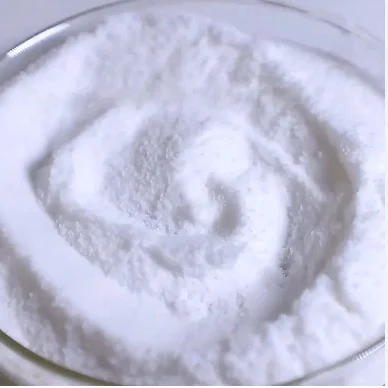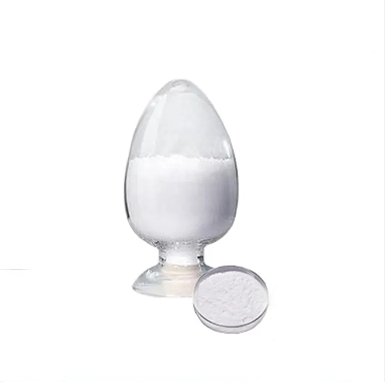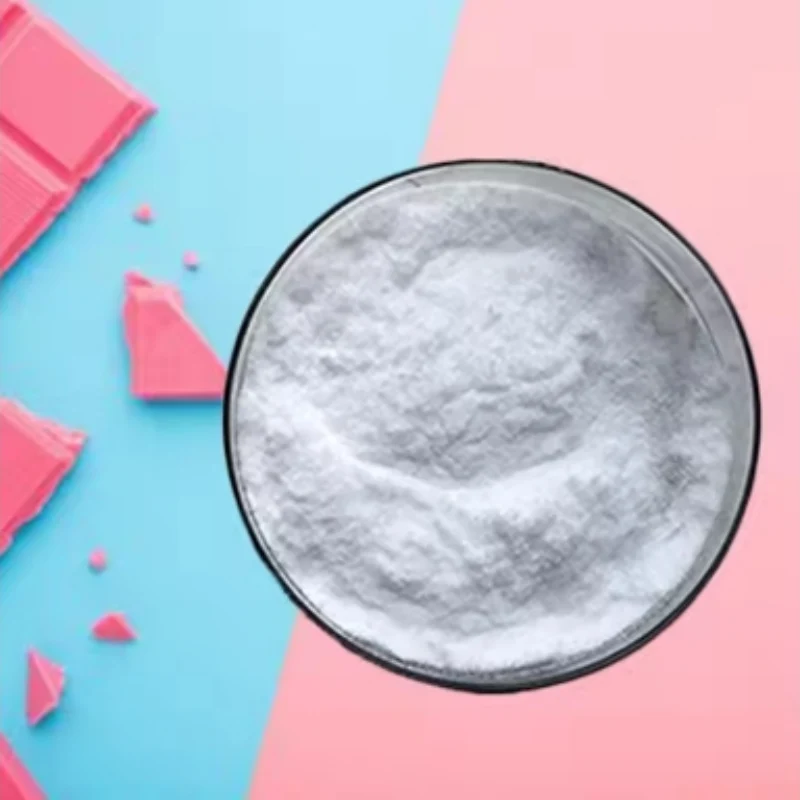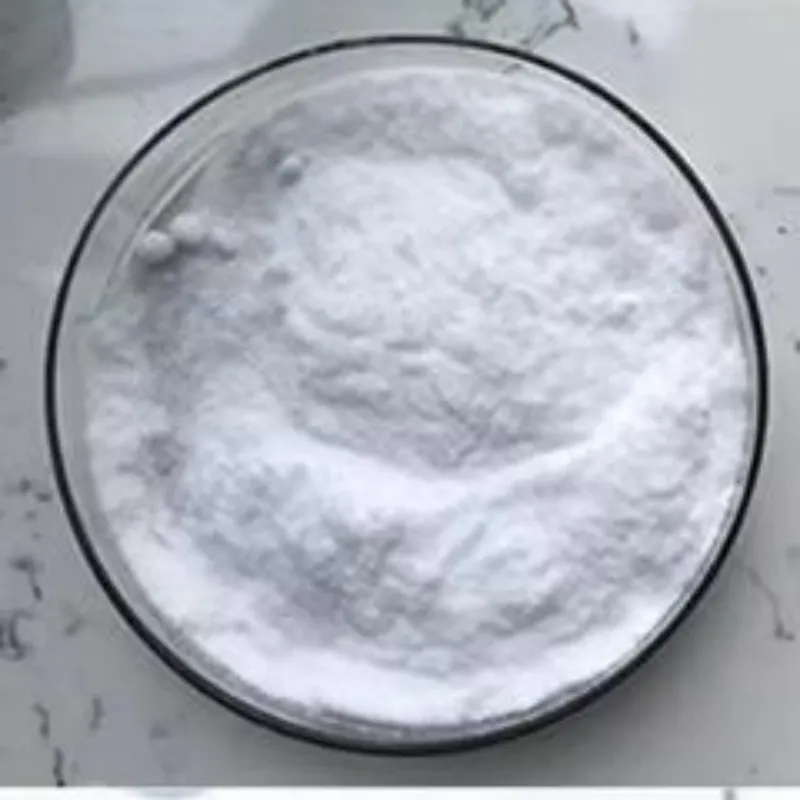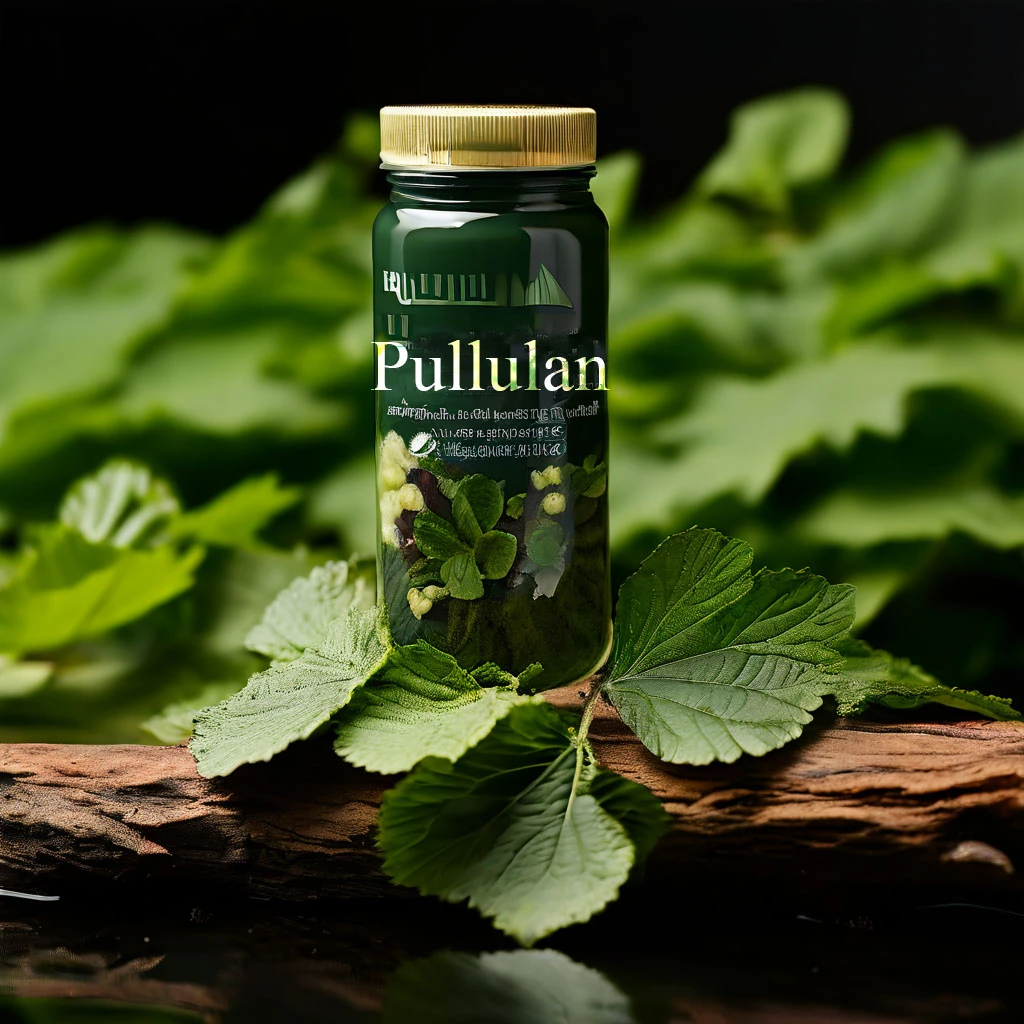What is pullulan powder?
Pullulan powder, also known as pullulan polysaccharide or simply pullulan, is a natural, water-soluble, and non-ionic polysaccharide produced primarily by the fermentation of starch by the microorganism Aureobasidium pullulans. This unique biopolymer has gained significant attention in the food industry due to its numerous beneficial properties, especially in terms of enhancing the shelf life of various food products. The chemical structure of pullulan powder consists of maltotriose units linked by α-1,6 glycosidic bonds, forming a linear polymer. This structure gives pullulan unique physical and chemical properties that make it an ideal ingredient for food preservation. Unlike other polysaccharides, pullulan is non-ionic, meaning it does not carry a net electrical charge, which contributes to its stability and compatibility with various food systems. One of the key benefits of pullulan powder in food preservation is its ability to form a protective film on the surface of food products. This film acts as a barrier against moisture loss, oxygen penetration, and microbial contamination, thus extending the shelf life of the food. Pullulan films are transparent and have excellent oxygen barrier properties, making them particularly suitable for packaging applications where maintaining the freshness and appearance of the food is crucial. In addition to its barrier properties, pullulan powder also possesses good solubility and dispersibility in water. This allows it to be easily incorporated into various food formulations, including emulsions, suspensions, and gels. Moreover, pullulan is stable over a wide range of pH values and temperatures, ensuring its efficacy even under challenging processing conditions. The use of pullulan powder in food preservation is not limited to packaging applications. It can also be used as an ingredient in food coatings, where it helps to seal in moisture and nutrients while protecting the food from external contaminants. Pullulan coatings are particularly effective in preserving fruits and vegetables, extending their freshness and reducing postharvest losses. Moreover, pullulan powder has excellent biocompatibility and biodegradability, making it an environmentally friendly choice for food preservation. Its natural origin and lack of toxicity have led to its approval for use as a food additive in many countries around the world. In terms of research and development, scientists are constantly exploring new applications of pullulan powder in food preservation. Studies have shown that pullulan films can be modified by the addition of various compounds to enhance their functional properties, such as antimicrobial agents or antioxidants. These modified films have the potential to provide even greater protection against microbial contamination and oxidation, further extending the shelf life of food products. Pullulan powder is a versatile and effective ingredient for enhancing the shelf life of food products. Its unique properties, including barrier properties, solubility, and biodegradability, make it an ideal choice for both packaging and coating applications. As the demand for longer-lasting and safer food products continues to grow, the use of pullulan powder in food preservation is expected to become even more widespread in the future.
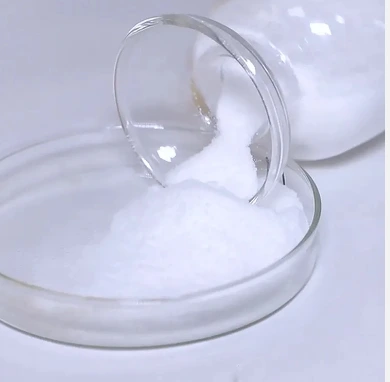
How does pullulan powder enhance shelf life?
Pullulan powder has emerged as a remarkable ingredient in the field of food preservation, playing a crucial role in enhancing the shelf life of various food products.
Unique Properties of Pullulan Powder
It has excellent film-forming capabilities, which means it can create a thin and uniform layer that acts as a barrier. This barrier helps to prevent the ingress of oxygen, moisture, and other external factors that can cause spoilage and degradation of the food.
Controlling Flavors and Aromas
Pullulan powder also has the ability to control the release of flavors and aromas. This is particularly important in the case of flavored or scented food products.
In what types of food can pullulan powder be used for preservation?
Pullulan powder is compatible with a wide range of food types and can be easily incorporated into different formulations.
Applications in Baked Goods
In packaged bakery products, the addition of pullulan powder can prevent staling and maintain the softness and freshness of the bread or pastries.
In Dairy Products
In dairy products like yogurt or cheese, it can help to prevent mold growth and maintain the texture and flavor.
In Beverages
In beverages, it can protect the flavor and prevent oxidation, ensuring a consistent quality throughout the shelf life.
Does pullulan powder affect the taste of food?
Pullulan powder, in its pure form, does not significantly affect the taste of food. This polysaccharide is known for its neutral taste and odor, which allows it to be used in a wide range of food applications without altering the flavor profile of the final product.
Here are some key points regarding pullulan powder's effect on food taste:
Neutral Taste and Odor: Pullulan powder is non-ionic and has a neutral taste and odor. This means that when it is added to food, it does not introduce any unwanted flavors or smells. This is an important consideration for food manufacturers who want to preserve the original taste of their products.
Use as a Barrier and Protective Layer: Pullulan powder is often used to form a protective film or coating on food surfaces. This film acts as a barrier against moisture loss, oxygen penetration, and microbial contamination. While the film itself is tasteless, it helps maintain the freshness and flavor of the food by preventing spoilage and degradation.
Compatibility with Flavors: Pullulan powder is compatible with a wide range of flavors and ingredients. It can be easily incorporated into food formulations without affecting the taste or aroma of the other ingredients. This allows food manufacturers to use pullulan powder in a variety of food products, including those with complex flavor profiles.
No Chemical Interactions: Pullulan powder does not react chemically with food ingredients, including flavors and spices. This ensures that the taste of the food remains unchanged after the addition of pullulan powder.
Transparent Film: The protective film formed by pullulan powder is transparent, allowing the natural color and appearance of the food to be preserved. This is important for food products that rely on their visual appeal to attract consumers.
In summary, pullulan powder does not affect the taste of food when used properly. Its neutral taste and odor, compatibility with flavors, and lack of chemical interactions ensure that the original taste of the food is preserved. Pullulan powder's main role is to provide a protective barrier that extends the shelf life and freshness of food products.
Is pullulan powder safe for consumption?
Pullulan powder is safe for consumption when used appropriately. Here are the key points regarding its safety:
Natural Origin: Pullulan powder is a natural polysaccharide produced by the microorganism Aureobacidium pullulans. Its natural origin and biosynthesis process make it a safe ingredient for food applications.
Non-toxic and Non-allergenic: Pullulan powder is non-toxic and non-allergenic, meaning it does not pose a health risk to consumers. There are no reported cases of adverse reactions or allergies associated with the consumption of pullulan powder.
Approved for Food Use: Pullulan powder is widely used in the food industry and is approved for use as a food additive in many countries. It is recognized as a safe ingredient by various food regulatory agencies around the world.
Stable and Non-reactive: Pullulan powder is chemically stable and does not react with other food ingredients. This ensures that it does not alter the taste, aroma, or nutritional value of the food products it is added to.
No Reported Side Effects: Despite its widespread use in food products, there are no reported side effects or health concerns associated with the consumption of pullulan powder.
In summary, pullulan powder is a safe ingredient for consumption when used appropriately in food products. Its natural origin, non-toxic and non-allergenic properties, as well as its approval for food use by various regulatory agencies, support its safety for human consumption.
Can pullulan powder be used in all stages of food processing?
Pullulan powder has a wide range of applications in food processing, but it is not necessarily suitable for all stages. Here is a detailed analysis and summary of its usage stages in Chinese:
Applicable food processing stages:
Food preservation: Pullulan powder can form a transparent film that serves as a protective layer for food, preventing moisture loss, oxygen penetration, and microbial contamination, thus extending the shelf life of food.
Food packaging: It can be used as part of food packaging materials, providing an additional protective layer and enhancing the sealing and barrier properties of the packaging.
Food additives: In some foods, pullulan powder can be used as a thickener, stabilizer, or emulsifier to improve the texture and taste of the food.
Stages where it may not be suitable or requires special consideration:
Raw material processing: Although pullulan powder can be used to protect and process food in later stages, its direct application in the raw material processing stage may be limited as this stage focuses on cleaning, preparation, and initial processing of the raw materials.
High-temperature processing: While pullulan powder is relatively stable at high temperatures, its stability and functionality may need further evaluation under extreme high-temperature conditions (such as baking, deep-frying, etc.).
Specific food types: For certain types of foods (such as dairy products, fruit juices, etc.), the applicability of pullulan powder may require evaluation based on the specific characteristics and processing requirements of the food.
Other considerations:
Cost: The cost of pullulan powder may be higher than other traditional food additives, so cost-effectiveness needs to be considered when choosing to use it.
Regulatory requirements: Different countries and regions have different regulatory requirements for the use of food additives, so it is necessary to comply with the corresponding regulations and standards when applying pullulan powder.
Pullulan powder can play a role in multiple stages of food processing, but special consideration or evaluation of its applicability may be required in certain specific situations. In practical applications, it is recommended to determine the usage method and stage of pullulan powder based on the specific characteristics and processing requirements of the food.
How much pullulan powder should be added for effective food preservation?
The amount of pullulan powder added for effective food preservation depends on various factors, including the type of food, its water content, the intended shelf life, and the specific processing and packaging conditions. Therefore, it is difficult to give a universal recommendation for the exact amount of pullulan powder to be added.
Generally, the manufacturer's instructions or recommendations should be followed for the specific application. If no specific instructions are available, it is recommended to conduct pilot tests or consult a food scientist or technologist to determine the optimal dosage for your specific food and processing conditions.
Remember that adding too much pullulan powder may not necessarily improve food preservation and may even have adverse effects on the taste, texture, or other sensory qualities of the food. Therefore, it is important to find the right balance between effectiveness and acceptability.
When considering adding pullulan powder to food for preservation, the specific amount to be added will vary depending on factors such as food type, processing conditions, and expected shelf life. The following is a hypothetical example intended to provide a reference for the amount of pullulan to be added based on common food preservation needs:
Food type: Fresh fruits and vegetables (such as apples)
Expected shelf life: Extended to two weeks
Processing conditions: Storage at room temperature, no special treatment
Pullulan addition amount recommendation:
Basic addition amount: Based on preliminary research and industry practice, the basic addition amount of pullulan for fresh fruits and vegetables is generally in the range of 0.1% to 0.5% (calculated by food weight). In this example, we assume a basic addition amount of 0.3%.
Considerations:
Moisture content: Fruits and vegetables generally have a high moisture content, which affects the film-forming and barrier properties of pullulan. If the moisture content of fruits and vegetables is particularly high, it may be necessary to increase the amount of pullulan to enhance the preservation effect.
Storage conditions: Storage at room temperature is relatively simple, but if a longer shelf life or more stringent storage conditions (such as low temperature or modified atmosphere packaging) are required, the amount of pullulan added may need to be adjusted.
Cost-effectiveness: The cost-effectiveness between the price of pullulan and the amount added also needs to be considered. Without affecting the preservation effect, reducing the amount added as much as possible can reduce production costs.
Recommended addition amount:
In this example, we assume that the moisture content of apples is moderate, the storage conditions are room temperature, and the shelf life needs to be extended to two weeks. Therefore, the recommended pullulan addition amount is 0.3% (calculated by apple weight). This means that 0.3 grams of pullulan should be added for every 100 grams of apples.
Please note that this is only a hypothetical example, and the specific addition amount should be adjusted according to actual conditions. In practical applications, it is recommended to determine the optimal amount of pullulan added through small-scale trials to ensure food safety and preservation effects. At the same time, it is also necessary to pay attention to comply with relevant food safety regulations and standards.
Does pullulan powder work better with certain food ingredients?
Pullulan powder can indeed work better with certain food ingredients, depending on the specific application and desired effect. Here are some key points to consider:
Compatibility with Ingredients: Pullulan powder is generally compatible with a wide range of food ingredients. However, its effectiveness may vary depending on the specific food matrix and ingredients.
Improving Texture and Mouthfeel: Pullulan powder can help improve the texture and mouthfeel of certain foods. For example, in bakery products, it can enhance the smoothness and elasticity of the dough, resulting in softer and more voluminous baked goods.
Stabilizing and Thickening: Pullulan powder has good water solubility and film-forming properties, making it effective as a stabilizer and thickener in foods. This is particularly useful in beverages, sauces, and jellies, where it can enhance viscosity and create a smoother texture.
Preservation Effects: While pullulan powder itself does not directly preserve food, it can help improve the barrier properties of packaging materials. This can enhance the shelf life of food products by reducing the rate of moisture loss, oxygen ingress, and microbial contamination.
Dosage Considerations: The amount of pullulan powder required for effective results depends on the specific food application. For example, in bakery products, a dosage of 0.1% to 0.5% (by weight of flour) is typically used. However, for beverages or sauces, a higher dosage may be required to achieve the desired thickening effect.
Certifications and Standards: When selecting pullulan powder for food applications, it is important to ensure that it meets the relevant food safety standards and certifications, such as ISO, FDA, and HACCP. These certifications ensure that the pullulan powder is suitable for human consumption and has undergone rigorous testing for safety and purity.
In summary, pullulan powder can work effectively with various food ingredients to improve texture, stabilize emulsions, thicken sauces, and enhance barrier properties. However, the specific dosage and application will depend on the desired effect and the specific food matrix being used.
Can pullulan powder prevent microbial growth in food?
Yes, pullulan powder can help prevent microbial growth in food. However, the effectiveness of pullulan powder in inhibiting microbial growth depends on several factors, including the type of food, the concentration of pullulan powder used, and the specific microorganisms involved.
Here are some key points regarding pullulan powder and its ability to prevent microbial growth in food:
Barrier Properties: Pullulan powder has good film-forming properties that can create a protective barrier on food surfaces. This barrier can help prevent the ingress of moisture, oxygen, and microorganisms, thus reducing the rate of microbial growth.
Concentration: The concentration of pullulan powder used is crucial for its effectiveness. Higher concentrations may provide a stronger protective barrier, but excessive amounts may affect the taste, texture, or other properties of the food. Therefore, it is important to determine the optimal concentration based on specific food applications.
Specificity: Pullulan powder may be more effective against certain types of microorganisms compared to others. Its effectiveness depends on the specific microorganism and its physiological characteristics.
Combination with Other Methods: Pullulan powder can be used as an adjunct to other food preservation methods, such as refrigeration, packaging, and the use of preservatives. Combining pullulan powder with these methods may provide a more comprehensive approach to preventing microbial growth in food.
In summary, pullulan powder can help prevent microbial growth in food by creating a protective barrier on food surfaces. However, its effectiveness depends on factors such as concentration, specificity, and the combination with other preservation methods. Further research and testing are necessary to determine the optimal conditions for using pullulan powder as a food preservative.
Will pullulan powder change the texture of food?
Yes, pullulan powder has the ability to significantly change the texture of food. Pullulan is a polysaccharide produced by the fermentation of starch by Aureobasidium pullulans, a type of yeast-like fungus. Its unique properties, including water solubility, viscosity, and gel-forming capabilities, make it an effective ingredient for modifying food textures.
The incorporation of pullulan powder into food formulations can influence the texture in several ways. Firstly, pullulan is a highly water-soluble polymer, which allows it to readily absorb and retain water molecules. This water-binding ability contributes to an increase in the viscosity of food systems, resulting in a thicker or more viscous texture. Pullulan's viscosity-enhancing properties are especially useful in products like sauces, dressings, and beverages, where a smooth and creamy consistency is desired.
Moreover, pullulan powder exhibits good gel-forming properties. In the presence of sufficient water, pullulan molecules can intertwine and form a three-dimensional network, resulting in a gel-like structure. This gel formation can impart a firm yet elastic texture to foods, such as in confectioneries and desserts. The gel structure created by pullulan also helps to stabilize emulsions and suspensions, preventing phase separation and maintaining a uniform texture over time.
The amount of pullulan powder used and the specific food application determine the extent of texture modification. In small quantities, pullulan can subtly enhance the viscosity and mouthfeel of a food, while higher concentrations can produce more dramatic changes in texture, such as a thicker consistency or a firmer gel-like structure.
Additionally, pullulan powder is non-toxic, non-allergenic, and stable under a wide range of pH and temperature conditions. These properties make it a safe and versatile ingredient for modifying food textures in a variety of applications, from dairy products and desserts to sauces and dressings.
In summary, pullulan powder can indeed change the texture of food, primarily through its water-binding, viscosity-enhancing, and gel-forming properties. Its ability to modify texture in a variety of food systems, combined with its safety and stability, makes pullulan a valuable ingredient in the food industry.
How long can pullulan powder extend the shelf life of food?
Pullulan powder, as a natural polysaccharide, has been found to extend the shelf life of food in several ways, though the specific duration depends on the type of food, its initial condition, and the concentration and application method of pullulan powder.
Forming a Protective Barrier: Pullulan powder can be used to create a thin, edible film or coating on the surface of food products. This film acts as a barrier, reducing the rate of moisture loss, oxygen permeation, and microbial contamination. By maintaining the integrity of the food's surface, pullulan powder helps preserve freshness and extend the shelf life.
Improving Stability: In emulsions, suspensions, and other multi-phase food systems, pullulan powder can improve stability by preventing phase separation. This ensures that the food remains homogeneous and maintains its original texture and taste for a longer period.
Antimicrobial Properties: Recent research has explored the potential of adding antimicrobial agents to pullulan-based films. These films can inhibit the growth of bacteria, mold, and other microorganisms, further extending the shelf life of foods. However, the effectiveness of this approach depends on the specific antimicrobial agent used and its concentration.
Concentration and Application: The duration of shelf life extension depends on the concentration of pullulan powder used and how it is applied. Higher concentrations and more effective application methods, such as uniform coating or encapsulation, tend to provide longer-lasting protection.
Type of Food: The type of food also plays a crucial role. Foods that are more perishable or prone to moisture loss, oxidation, or microbial contamination will see more significant improvements in shelf life when treated with pullulan powder.
In summary, pullulan powder can extend the shelf life of food by forming a protective barrier, improving stability, and potentially inhibiting microbial growth. However, the specific duration of shelf life extension depends on multiple factors, including the type of food, its initial condition, the concentration of pullulan powder, and the application method. While no definitive figures can be provided without specific experimental data, pullulan powder has been shown to effectively preserve food freshness and extend shelf life in various studies.
Does pullulan powder have any limitations in food preservation?
Pullulan powder, though effective in extending the shelf life of food in numerous ways, does have some limitations in food preservation. Here are the key points regarding its limitations:
Concentration and Application: The effectiveness of pullulan powder in food preservation depends significantly on its concentration and application method. Lower concentrations or ineffective application methods may not provide sufficient protection against moisture loss, oxidation, or microbial contamination. This limits its ability to extend the shelf life of food products.
Specificity of Food Type: Pullulan powder may work better for certain types of food than others. Foods that are more perishable or prone to moisture loss, oxidation, or microbial contamination may see more significant improvements in shelf life when treated with pullulan powder. However, for foods that are less perishable or already have good natural barriers, pullulan powder may not provide significant additional benefits.
Antimicrobial Properties: While pullulan powder can be combined with antimicrobial agents to inhibit microbial growth, its own antimicrobial properties are limited. This means that it may not be effective against all types of microorganisms, especially those that are resistant to common preservatives.
Cost Considerations: The cost of pullulan powder can be a limitation for some food manufacturers. Depending on the desired concentration and application method, the use of pullulan powder may increase the overall cost of production. This may not be feasible for manufacturers with tight budgets or high-volume production needs.
Compatibility with Other Ingredients: Pullulan powder needs to be compatible with other ingredients in the food product to ensure its effectiveness. If it reacts adversely with other ingredients, it may compromise the quality or safety of the food.
In summary, while pullulan powder has numerous benefits in food preservation, its effectiveness depends on factors such as concentration, application method, food type, antimicrobial properties, cost considerations, and compatibility with other ingredients. Understanding these limitations can help manufacturers determine the best use of pullulan powder in their specific food products.
Can pullulan powder be used in frozen foods?
Pullulan powder can indeed be used in frozen foods, and it offers several benefits when employed in this context. Here are the key points regarding the use of pullulan powder in frozen foods:
Moisture Retention: Pullulan powder is an excellent moisture retainer. In frozen foods, this property helps to minimize the formation of ice crystals, which can damage the texture and flavor of the food. By retaining moisture, pullulan powder helps maintain the integrity and quality of the food during the freezing process.
Freeze-Thaw Stability: Foods that are frozen and then thawed repeatedly are prone to degradation. Pullulan powder can help improve the freeze-thaw stability of foods by providing a protective layer that minimizes damage caused by ice crystal formation and expansion during these processes.
Barrier Properties: Pullulan powder forms a thin, yet effective, barrier on the surface of food. This barrier helps to prevent the penetration of oxygen and water vapor, which can lead to oxidation and moisture loss in frozen foods. By maintaining the integrity of the food's natural barriers, pullulan powder extends the shelf life of frozen foods.
Improved Texture: When used properly, pullulan powder can help maintain the texture of frozen foods. By minimizing the formation of large ice crystals, pullulan powder helps preserve the original texture and mouthfeel of the food after it has been frozen and thawed.
Compatibility with Other Ingredients: Pullulan powder is generally compatible with other ingredients commonly used in frozen foods. This allows manufacturers to incorporate pullulan powder into their existing formulations without major modifications.
In summary, pullulan powder is a valuable ingredient for use in frozen foods. Its moisture retention, freeze-thaw stability, barrier properties, and texture-preserving capabilities make it an effective tool for extending the shelf life and maintaining the quality of frozen foods. Manufacturers should consult with food scientists or ingredient suppliers to determine the optimal concentration and application method for pullulan powder in their specific products.
Does using pullulan powder require special storage conditions?
Using pullulan powder does require some special storage conditions to ensure its quality and functionality are maintained. Here are the key points to consider when storing pullulan powder:
Temperature Control:
Pullulan powder should be stored in a cool, dry environment. Typically, a temperature range of 5°C to 25°C (41°F to 77°F) is recommended.
Avoid exposing pullulan powder to high temperatures, as this can lead to degradation of the polysaccharide chains, affecting its functional properties.
Similarly, extreme low temperatures should also be avoided, as they may cause crystallization or solidification of the powder, affecting its flowability and dispersion properties.
Humidity Control:
Moisture content is crucial for pullulan powder. It should be stored in a dry environment with a relative humidity below 50% to prevent moisture absorption.
High humidity can lead to the formation of clumps in the powder, affecting its dispersibility and solubility.
Additionally, moisture can promote microbial growth, leading to contamination and spoilage of the powder.
Packaging and Sealing:
Pullulan powder should be stored in airtight, moisture-proof packaging to prevent exposure to air and moisture.
Once the packaging is opened, it is important to reseal the container tightly to minimize exposure to air and moisture.
Consider using vacuum-sealed packaging or desiccant bags to further reduce moisture absorption.
Light Protection:
Pullulan powder should be stored in a dark or shaded area to protect it from direct sunlight.
Prolonged exposure to light can cause photodegradation of the polysaccharides, reducing their functionality.
Physical Handling:
Avoid physical damage to the packaging, such as punctures or tears, which can allow air and moisture to enter.
Handle the powder gently to prevent dust formation and inhalation, as prolonged inhalation of dust can be harmful.
Shelf Life and Expiration Date:
Check the expiration date on the packaging and use the powder within the specified shelf life.
If the powder is stored properly, it can typically maintain its quality for an extended period, but it is still important to follow the expiration date for optimal results.
In summary, special storage conditions are required for pullulan powder to ensure its quality and functionality are maintained. By controlling temperature, humidity, packaging, light exposure, physical handling, and following expiration dates, manufacturers and users can ensure that pullulan powder remains effective and safe for use in various applications.
Are there any alternative substances to pullulan powder for food preservation?
Yes, there are alternative substances to pullulan powder for food preservation. Some common alternatives include:
Synthetic preservatives like sodium propionate and potassium sorbate, which inhibit the growth of mold, bacteria, and yeast. These are widely used in bakery products and other foods.
Natural extracts from plants, such as grape seed extract and tea polyphenols, which possess antioxidant and antibacterial properties. These extracts have been successfully applied in food preservation.
Packaging materials like vacuum packaging or edible films made of chitosan or cellulose. These films provide an oxygen barrier and reduce water loss, extending the shelf life of foods.
Refrigeration and freezing are traditional methods that slow down microbial growth and chemical reactions, thus preserving food.
In summary, while pullulan powder is an effective food preservative, there are numerous alternatives available, ranging from synthetic chemicals to natural extracts and innovative packaging solutions.
Does pullulan powder work equally well in all climates?
Pullulan powder does not necessarily work equally well in all climates.
Pullulan powder, a polysaccharide produced by the fermentation of starch, has been widely used in food preservation due to its unique properties. However, its efficacy can vary depending on the specific climate conditions.
Temperature variations: In hotter climates, microbial activity tends to increase, which may affect the ability of pullulan powder to inhibit microbial growth. Conversely, in colder climates, microbial activity is reduced, and pullulan powder may be more effective.
Humidity: High humidity can promote the growth of mold and bacteria, potentially reducing the effectiveness of pullulan powder. In drier climates, however, the powder may last longer and perform better.
Exposure to sunlight: UV radiation from sunlight can degrade some food preservatives. If pullulan powder is exposed to direct sunlight, its efficacy may be reduced.
In summary, while pullulan powder is a valuable food preservative, its performance is influenced by the specific climate conditions. It is important to consider the local climate when evaluating the suitability of pullulan powder for food preservation.
Can pullulan powder be used in organic food preservation?
Pullulan powder can be used in organic food preservation, but its use needs to be carefully considered and evaluated.
Pullulan powder, a polysaccharide produced by the fermentation of starch, has several properties that are desirable for food preservation, including its ability to form a protective film on the surface of foods, reduce water loss, and inhibit the growth of microorganisms.
However, in the context of organic food preservation, the use of pullulan powder should be approached with caution. Organic foods are typically produced without the use of synthetic chemicals, pesticides, or fertilizers, and consumers often prefer preservatives that are also natural or derived from natural sources. Pullulan powder itself is a natural product, but its production process and potential for contamination with non-organic materials need to be carefully evaluated.
Furthermore, the use of pullulan powder in organic food preservation should be based on scientific evidence demonstrating its safety and effectiveness. The potential impact of pullulan powder on the nutritional value, sensory properties, and shelf life of organic foods should also be considered.
In summary, while pullulan powder has the potential to be used in organic food preservation, its use should be carefully evaluated based on its production process, safety profile, and potential impact on the quality of organic foods.
Does pullulan powder affect the nutritional value of food?
Pullulan powder itself does not directly affect the nutritional value of food. However, its use in food preservation can potentially preserve the nutritional components of foods by inhibiting microbial growth and reducing degradation processes. For instance, studies have shown that pullulanase enzymes, which produce pullulan powder, can be used to modify starch, which may influence the digestibility and bioavailability of certain nutrients. In summary, pullulan powder can help maintain the nutritional value of foods by extending their shelf life.
Can pullulan powder be used in home food preservation?
Yes, pullulan powder can be used in home food preservation. It is a natural polysaccharide that can help extend the shelf life of foods by inhibiting microbial growth and reducing water loss. While it is not as commonly used as other household preservatives, pullulan powder can be an effective option for those looking for a natural way to preserve their foods. However, it's important to follow proper usage instructions and ensure that the powder is stored correctly to maintain its effectiveness.
From a sustainability perspective, what are the benefits of using pullulan powder in food preservation?
The use of pullulan powder in food preservation also offers benefits from a sustainability perspective.
Reducing Food Waste
By extending the shelf life of food, it reduces food waste.
Environmental Impact
This not only saves resources but also has a positive impact on the environment.
Conclusion
In conclusion, pullulan powder is a valuable tool in food preservation, enhancing the shelf life of a diverse range of food products. Its unique properties, including film-forming ability and flavor control, make it an effective and practical solution for maintaining food quality. With its wide compatibility and potential to reduce food waste, pullulan powder is set to play an increasingly important role in the food industry, ensuring that consumers can enjoy fresh and delicious food for a longer time.
